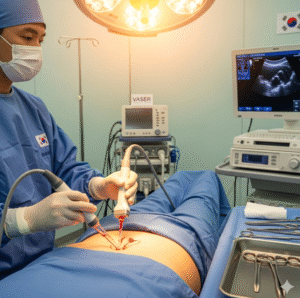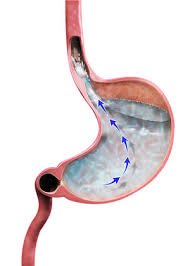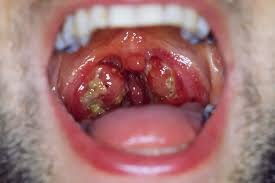Overview
Neck pain is a common musculoskeletal complaint affecting individuals of all ages. It refers to discomfort, stiffness, or soreness in the cervical region of the spine. While often caused by poor posture, muscle strain, or minor injuries, persistent neck pain can indicate underlying medical conditions such as herniated discs, arthritis, or neurological issues.
In Korea, management of neck pain emphasizes accurate diagnosis, non-surgical treatments, and advanced therapeutic interventions to relieve pain, improve mobility, and prevent recurrence.
Key Facts
➤ Neck pain is one of the most common musculoskeletal problems worldwide.
➤ Causes range from muscle strain, poor posture, and sleeping positions to degenerative diseases.
➤ Symptoms can be localized or radiate to shoulders, arms, or upper back.
➤ Chronic neck pain may affect daily activities, sleep quality, and work performance.
➤ Korean healthcare offers physiotherapy, pain management, and surgical options when necessary.
What is Neck Pain?
Neck pain involves discomfort or stiffness in the cervical spine, often accompanied by:
- Muscle tightness or spasm
- Limited range of motion
- Radiating pain to arms or shoulders
- Headaches in some cases
➔ Neck pain can be acute (lasting a few days to weeks) or chronic (lasting more than three months).
➔ Severity may range from mild discomfort to debilitating pain affecting normal activities.
Symptoms Related to Neck Pain
➤ Stiffness and reduced mobility in the neck.
➤ Localized pain in the cervical area.
➤ Pain that radiates to shoulders, arms, or upper back.
➤ Headaches originating from the neck (cervicogenic headaches).
➤ Tingling, numbness, or weakness in arms or hands in cases of nerve involvement.
➤ Muscle spasms or soreness after prolonged activity or poor posture.
Causes / Possible Causes
Neck pain arises from a variety of musculoskeletal, neurological, or systemic factors:
Muscle Strain and Posture
➤ Poor posture, particularly from prolonged computer or smartphone use (“tech neck”).
➤ Sleeping in awkward positions or using unsuitable pillows.
➤ Sudden movements or whiplash injuries.
Degenerative Conditions
➤ Cervical spondylosis – age-related wear of spinal discs and joints.
➤ Herniated cervical discs causing nerve compression.
➤ Osteoarthritis affecting cervical facet joints.
Trauma and Injuries
➤ Accidents, falls, or sports-related injuries.
➤ Fractures or dislocations in severe cases.
Neurological Causes
➤ Cervical radiculopathy due to nerve compression.
➤ Spinal cord involvement leading to myelopathy.
Other Medical Causes
➤ Infections such as meningitis or upper respiratory infections.
➤ Inflammatory conditions like rheumatoid arthritis.
➤ Tumors or systemic diseases (rare).
Risk Factors
➤ Sedentary lifestyle and prolonged desk work.
➤ Poor ergonomics and posture.
➤ Aging and degenerative spinal changes.
➤ History of neck trauma or whiplash.
➤ Stress, which can contribute to muscle tension.
Complications
Chronic or severe neck pain may lead to:
➤ Persistent discomfort and reduced quality of life.
➤ Limited mobility affecting work and daily activities.
➤ Radiating pain causing nerve compression symptoms in arms and hands.
➤ Sleep disturbances due to pain or stiffness.
➤ Rarely, underlying conditions may cause neurological deficits if untreated.
When Should I See My Doctor?
Consult a healthcare provider if:
➤ Pain persists for more than a few weeks despite home care.
➤ Numbness, tingling, or weakness develops in arms or hands.
➤ Pain is severe, sudden, or associated with trauma.
➤ Difficulty in controlling bladder or bowel functions accompanies neck pain.
➤ Symptoms include fever, unexplained weight loss, or night pain, suggesting serious underlying conditions.
Care and Treatment
Lifestyle and Home Measures
➤ Posture correction during work and sleep.
➤ Gentle neck stretches and exercises to maintain mobility.
➤ Use of ergonomic chairs, desks, and supportive pillows.
➤ Application of heat or cold packs for pain relief.
➤ Avoid prolonged static positions and take breaks during repetitive activities.
Medical Treatments
➤ Pain medications: NSAIDs or acetaminophen for temporary relief.
➤ Muscle relaxants for spasms.
➤ Physical therapy for strengthening, posture correction, and flexibility.
➤ Cervical traction or acupuncture in select cases.
➤ Injections (corticosteroids or nerve blocks) for chronic or severe pain.
Surgical Treatments
➤ Considered if conservative management fails or neurological deficits occur.
➤ Procedures may include discectomy, spinal fusion, or laminectomy depending on the cause.
Preventive Measures
➤ Maintain good posture and ergonomics.
➤ Regular exercise for neck and shoulder strength.
➤ Avoid heavy lifting without proper technique.
➤ Early evaluation for persistent or worsening symptoms.
Treatment Options in Korea
Korea offers advanced care for neck pain with a combination of modern medicine and traditional therapies:
Diagnostic Services
➤ X-rays, MRI, or CT scans to assess discs, nerves, and vertebrae.
➤ Neurological assessments to detect nerve involvement.
➤ Evaluation of muscle strength and range of motion by physiotherapists.
Therapies and Supportive Care
➤ Physical therapy, manual therapy, and posture correction programs.
➤ Pain management clinics offering medications, injections, and minimally invasive procedures.
➤ Traditional Korean treatments: acupuncture, cupping, and herbal therapy for symptom relief.
➤ Surgical interventions in specialized spine centers for degenerative or traumatic conditions.
➤ Integrated follow-up care to prevent recurrence and improve mobility.
✅ In summary: Neck pain is a common but multifactorial condition that can range from mild discomfort to significant functional impairment. In Korea, patients benefit from accurate diagnosis, conservative management, advanced interventions, and integrated care, ensuring pain relief, improved mobility, and prevention of complications.













